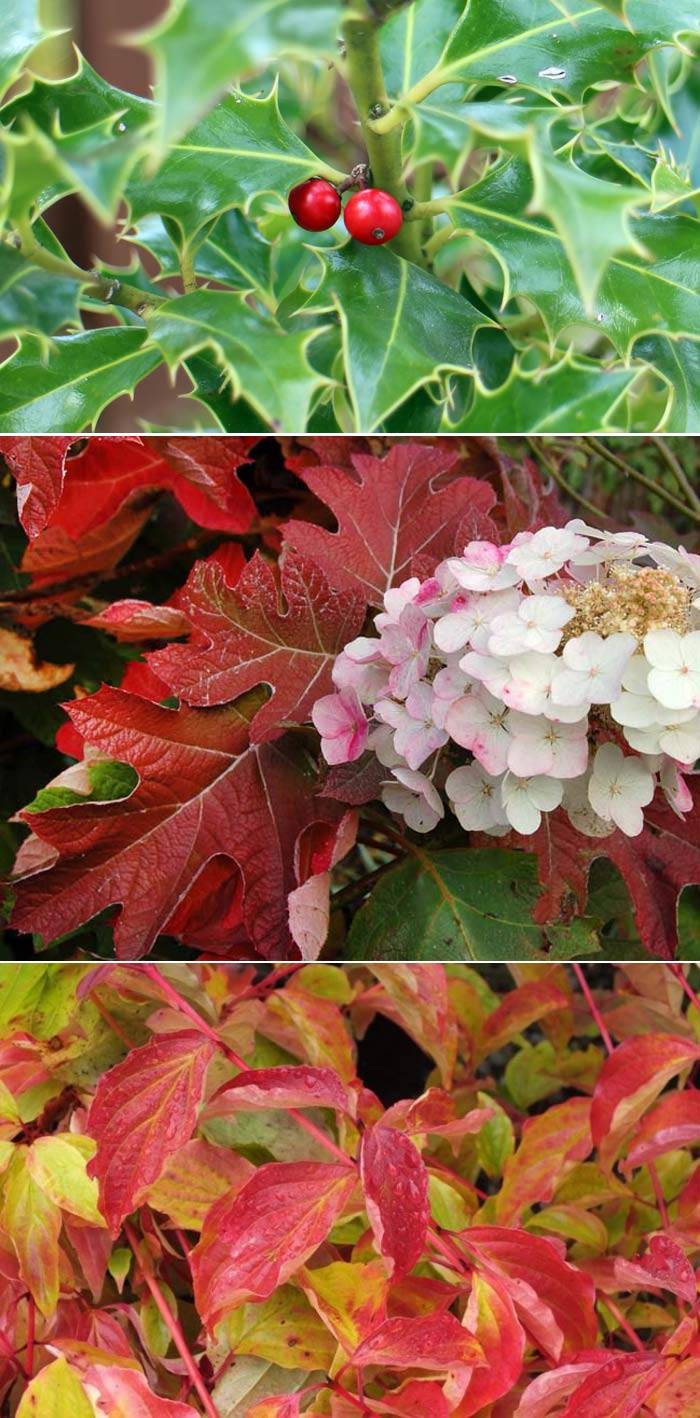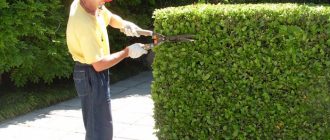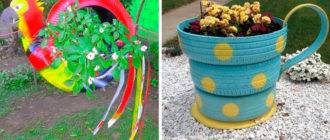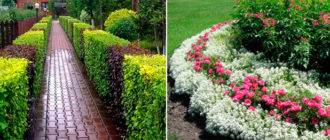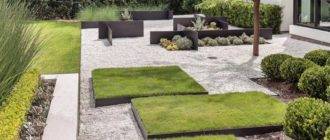Flower beds require regular maintenance from gardeners, for which summer residents do not always have enough time. Not only flowering plants can decorate the site, but also beautiful shrubs. We offer you 9 of the brightest of them.
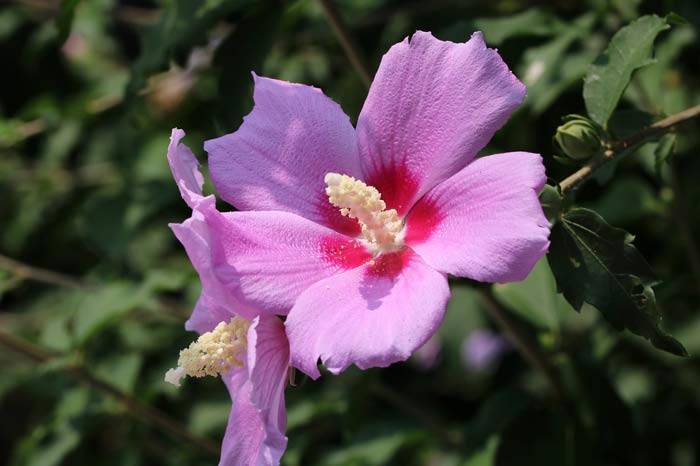
Elder
Elderberry has a very high growth rate, which must be controlled in garden plots in order not to get a shapeless bush of a huge area. It makes dense neat hedges that easily take any shape after trimming. It blooms in early summer in a bunch of fragrant flowers, but at the end of the season, berries appear that attract many birds. Therefore, you should not plant an elderberry directly near the house in order to avoid unpleasant surprises in the form of bird droppings on the glass. Elderberry is quite unpretentious in terms of soil quality and lighting. Grows best in the south of the European part of Russia.
Aucuba
Received the name "golden tree" for the unusual color of the leaves. If pruned regularly, the aucuba will grow no more than 2 meters in height. In its natural form, the height of the bush is 4 meters.
Aucuba japonica, often referred to as spotted laurel, looks beautiful even in low light conditions with the most challenging conditions. The shrub prefers to grow in the shade, the soil it needs is moist, nutritious, with good drainage. In the central zone of Russia, it is better to plant the aucuba in pots, and in the summer to display it as a decoration of the territory, otherwise the bush may not survive the winter.
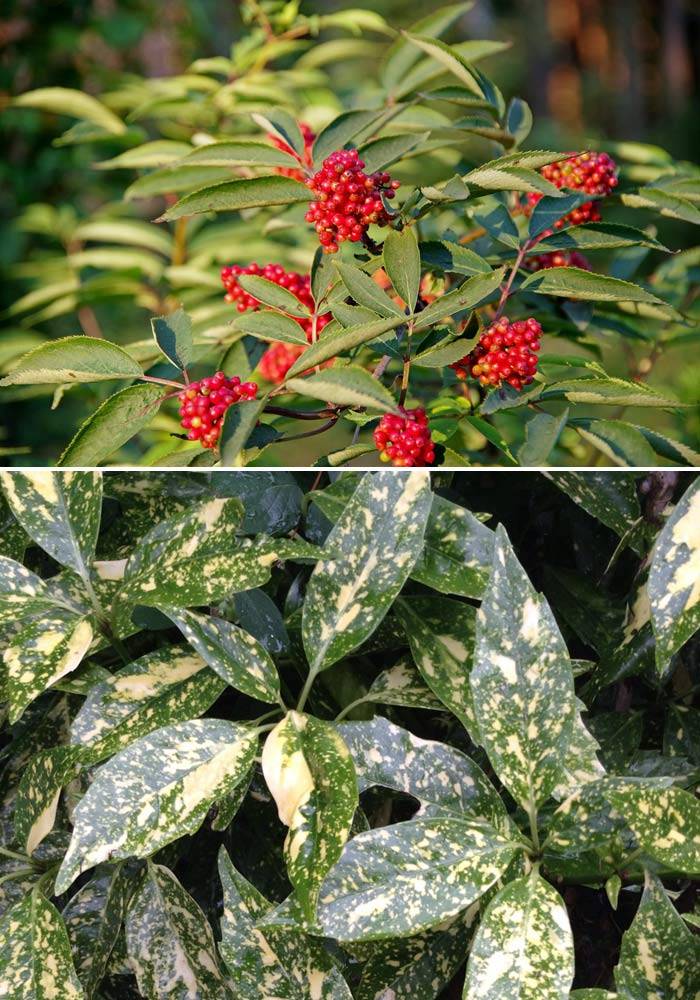
Eonimus (Euonymus)
It includes a huge number of varieties of shrubs - from dwarf plants to trees, foliage color varies from variegated to burgundy. The choice is yours. There are blooming euonymus, which already in spring delight with a riot of colors. The only thing these plants are demanding for is the presence of sunlight. In the shade, motley veins will not appear on the leaves.
Forsythia
Forsythia is ideal for creating a hedge, its height reaches from 1 to 3 meters. With the arrival of persistent spring heat, the tree begins to bloom with bright yellow flowers, this period lasts 20 days, after which the bush remains green until the end of the season. Forsythia is completely unpretentious, grows well in the vicinity of conifers.
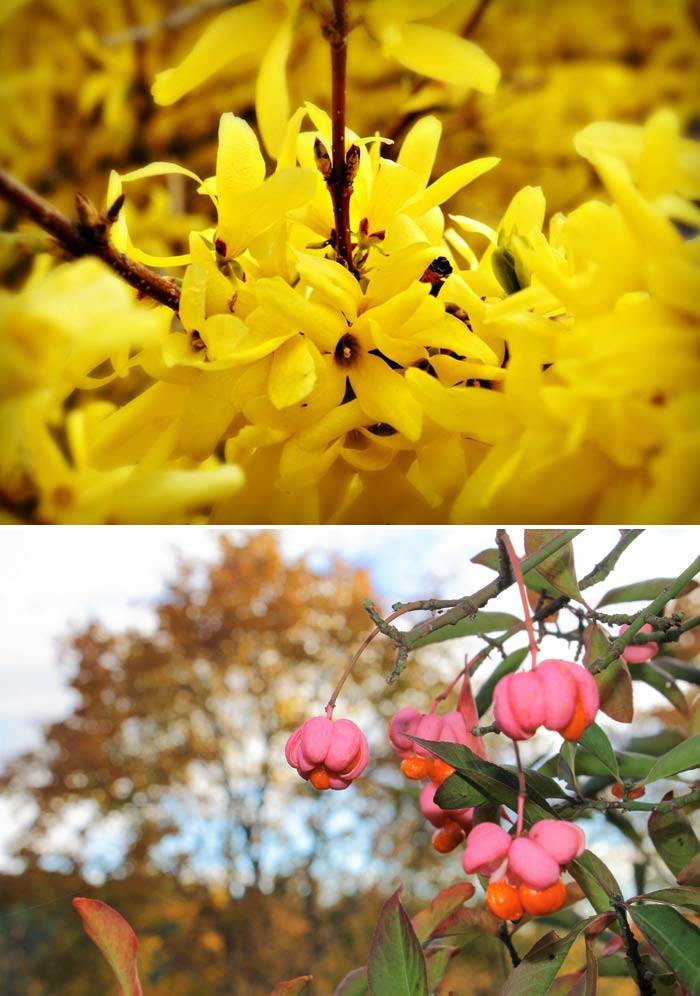
Red-leaved hazel
This ornamental plant has a lush crown with bright red-burgundy leaves. Such a bush will become a real decoration of any site. Hazel loves light and warmth, therefore it grows well in the southern part of Russia. Flowers bloom early, at the very beginning of spring. Thanks to its bright leaves, hazel is perfect as a hedge.
Rose of Sharon
Rose of Sharon belongs to the hibiscus family. Her vegetative period is very long, blooms from July to October. This plant, due to its vitality and endurance, is recognized as the national flower of South Korea. There are a lot of color options for inflorescences - from pale pink to fiery scarlet. The stem can be up to 3 meters high.
Holly
The shrub is famous for its carved leaves with a bright green glossy skin. The holly bush belongs to shade-tolerant moisture-loving plants, does not like transplanting to a new place. It can be either deciduous or evergreen. Holly keeps its shape for a long time after shearing; in spring, young seedlings must be protected from direct sunlight.
Does not tolerate frost below -20 degrees. But breeders have bred several varieties of holly, which will not be afraid of Russian winters, for example, "Blue Princess" or "China gol"
Hydrangea oakleaf
This flowering bush got its name due to textured leaves, which outwardly are very similar to oak leaves. Their size can reach 25 cm. The leaves acquire their color closer to autumn, in spring they are green.From June to late autumn, the hydrangea blooms with unusually beautiful white flowers collected in a cone. The plant is winter-hardy, but at -29 degrees can die. Although there have been cases of successful wintering even at lower temperatures.
Derain red
This bush looks very attractive in winter - thanks to the red color of its stems, it decorates the site with a pillar of fire. In summer, when covered with leaves, the lawn looks like a common green bush. But when the leaves fall off with the arrival of autumn, a trunk of an unusual color is exposed under it. In August it bears fruit with inedible black berries. Derain is completely unpretentious in cultivation, it takes root well both in the shade of the site and in the sun. Requires pruning to form a crown


